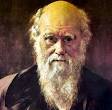 |
| Charles Darwin. |
 |
| Gregor Mendel |
 |
| Sewall Wright |
Gregor Mendel was the super monk that discovered the basic principal of genetics. Mendel's work was rejected, and was not accepted until after he died. During his own lifetime, most biologists held the idea that all characteristics were passed to the next generation through blending inheritance, in which the traits from each parent are averaged together. Instances of this are now explained by the action of multiple genes with effects. Charles Darwin tried to explain inheritance through a theory of pangenesis. Darwin didn't understand mutation. Wet earwax is Dominant and dry earwax is recessive. Both Mendel and Darwin died not knowing how they're ideas fit together. Not all mutations are harmful. Darwin had no idea how Traits were past on to They're offspring. Population genetics began as a reconciliation. The American biologist Sewall Wright who had a background in animal breeding experiments focused on combinations of interacting genes, and the effects of inbreeding on small, relatively isolated populations that exhibited genetic drift. Darwin spent his entire life defending his idea of Natural Selection. Population Genetics involves lots of math. Genetics and Evolution influence each other. Population Genetics on the surface is not a complicated idea. Population is a group of individuals that can interbreed. Since we have all kinds of gadgets we know a whole lot of stuff about Heredity, unlike Darwin, because he didn't have the gadgets we have today. Their are several factors that change allele frequency within a population just like fast and furious movies, their are five of them, and unlike fast and furious movies their very very important. Natural Selection is Darwins sweet little baby which he spent a lot of time defending it from haters. Mutation can be a bad thing. The Hardy-Weinberg equilibrium has lots of rules, I think. Mutations modify the gene pool. The smaller the population it is likely to get genetic drift. Population genetics is the study of allele freq uency distribution and change under the influence of the four main evolutionary processes: natural selection, genetic drift, mutation and gene flow. We can now study the genetic change in populations over just a couple of generations.
Sexual Selection is the most important evolutionary force on the population level. Sexual Selection changes the Genetic makeup of a population. Genetic Drift is when a allele frequency changes due to random chance. Genetic Drift doesn't cause a individual to be more fit, just different. The Hardy-Weinberg Equilibrium refers to this stability of allele frequencies over time. The Hardy-Weinberg Equilibrium acquires no Natural Selection, no Sexual Selection, no Mutations and finally no Gene Flow. The math of population genetics was originally developed as the beginning of the modern evolutionary synthesis. Natural selection is the fact that some traits make it more likely for an organism to survive and reproduce. Mutation is the ultimate source of genetic variation in the form of new alleles. Gene flow is the exchange of genes between populations which are usually of the same species. Horizontal gene transfer is the transfer of genetic material from one organism to another organism that is not its offspring. Why are the weird people the really smart one. Genetic drift changes allele frequencies. The American George R. Price worked with both Hamilton and Maynard Smith. American Richard Lewontin and Japanese Motoo Kimura were heavily influenced by Wright. A sexual population is a set of organisms that can breed together. Large-scale gene transfer has occurred between the ancestors of eukaryotic cells and prokaryotes. The population genetics of genetic drift are described by using branching processes. Mutation can result in several different types of change in DNA sequence.
No comments:
Post a Comment